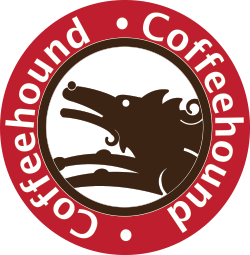As fun as French Presses, and Pour-overs can be, most of America uses a good ol’ coffee pot to get their coffee fix at home. Yet, it is safe to say most Americans are not getting the most out of their Mr. Coffee. If you are frustrated because your coffee pot isn’t giving you coffee of the same caliber that you get every morning at the Coffee Hound, fear not: you can tame your Mr. Coffee. All it takes is some love and a few key tidbits to get you on your way to coffee perfection.
The Coffee
The biggest variable in brewing on a filter-based coffee maker is the coffee you use, and this is where people run into the biggest hang-ups. The big brands will spend millions of dollars a year to launch big ad campaigns and make up (admittedly, very catchy) jingles to convince you that their coffee is fresh, but in reality this coffee is far from fresh and far from high-quality. To buy, package and distribute in mass quantity, freshness is usually the first victim. So choosing specialty, locally roasted coffee purchased from small farms you will be getting a product that tastes like coffee should taste. You wouldn’t be reading this if you didn’t already love our coffee, so you know that we take pride in what we do and that it sets us apart from the ‘Bucks and ‘Brews and the ‘Jeans. So to replicate the Coffee Hound experience, start with the Coffee Hound bean. We always have multiple blends and single-origin coffees available for purchase at the shop and we love answering your questions, because we love to see you just as excited about coffee as we are. Next time you stop by the shop, tell us what kind of coffee you like and we will recommend what beans will best suit you.
The Dosing
Before I worked at the Coffee Hound I was a regular and my drink was ‘coffee for here’ and after a while I tried to replicate a Coffee Hound cup on my new Mr. Coffee to some friends from out of town. But when I brewed the Coffee Hound beans at home, I ended up with a pot of undrinkable mud! It turns out that I used WAY too much coffee and ruined good beans! A good rule of thumb (that I clearly did not know at the time) is to use 1-2 tablespoons of ground coffee for every 6 oz. of water for your standard drip coffee maker. From there, you can adjust your portions a bit for desired strength, but with a little simple math, your Coffee Hound beans are on their way to tasting like they do in the shop.
The Grind
There are tons of ways to brew coffee, and almost every way has a different grind. For filter-based coffee makers there can even be a bit of variation, the most common difference is the cone filter and the flat-bottom filter, the names are pretty self-explanatory and if you aren’t sure, just take a look at see if it has a flat bottom or if it looks like a cone. As far as the grind goes, you are going to want to have a coarser grind for a flat-bottom filter and a finer grind for a cone filter. If you don’t have a grinder, no problem! When you come into the shop and pick up a bag of coffee, we always offer to grind your coffee however you need. However, we do recommend that you invest in a quality burr grinder to preserve the flavor of your beans, and to only grind as much coffee at a time as you are going to use.
The Water and Storage
If you’ve grown up, or have lived in Bloomington for any length of time you may have noticed that tap water doesn’t always taste the greatest. If there are impurities in your water, whether from mineral deposits, crummy pipes, or hard water, there will be impurities in the taste of your coffee. The water you’re brewing with should be filtered. Not only does this improve the taste of your coffee, but it will also lengthen the life of your coffee brewer.
There are four main enemies of the roasted coffee bean: moisture, sunlight, oxygen and time. Your coffee, when not being used, should be stored in airtight container in a cool, dark cupboard. Beans should never be frozen and we recommend buying in quantities that allow you to use your beans in a timely fashion: ideally within 1-2 weeks of the printed roast date on the bag.
That’s it essentially. Brewing drip coffee is the first thing we teach our new baristas and so it is only appropriate that it be the first method we include in this newsletter. Remember that coffee brewing is a mixture of science and art, so get out there experiment, but don’t be intimidated. After all, it’s basically hot water poured in some way of ground coffee beans.







